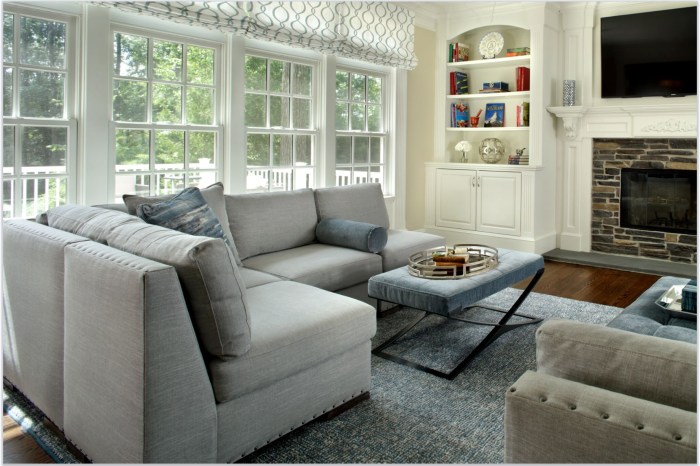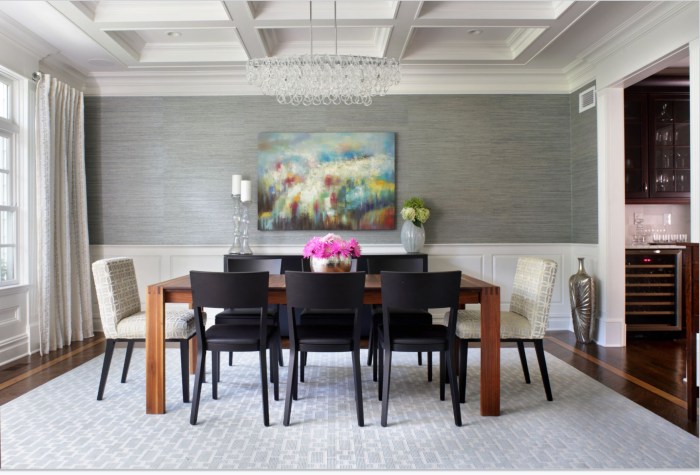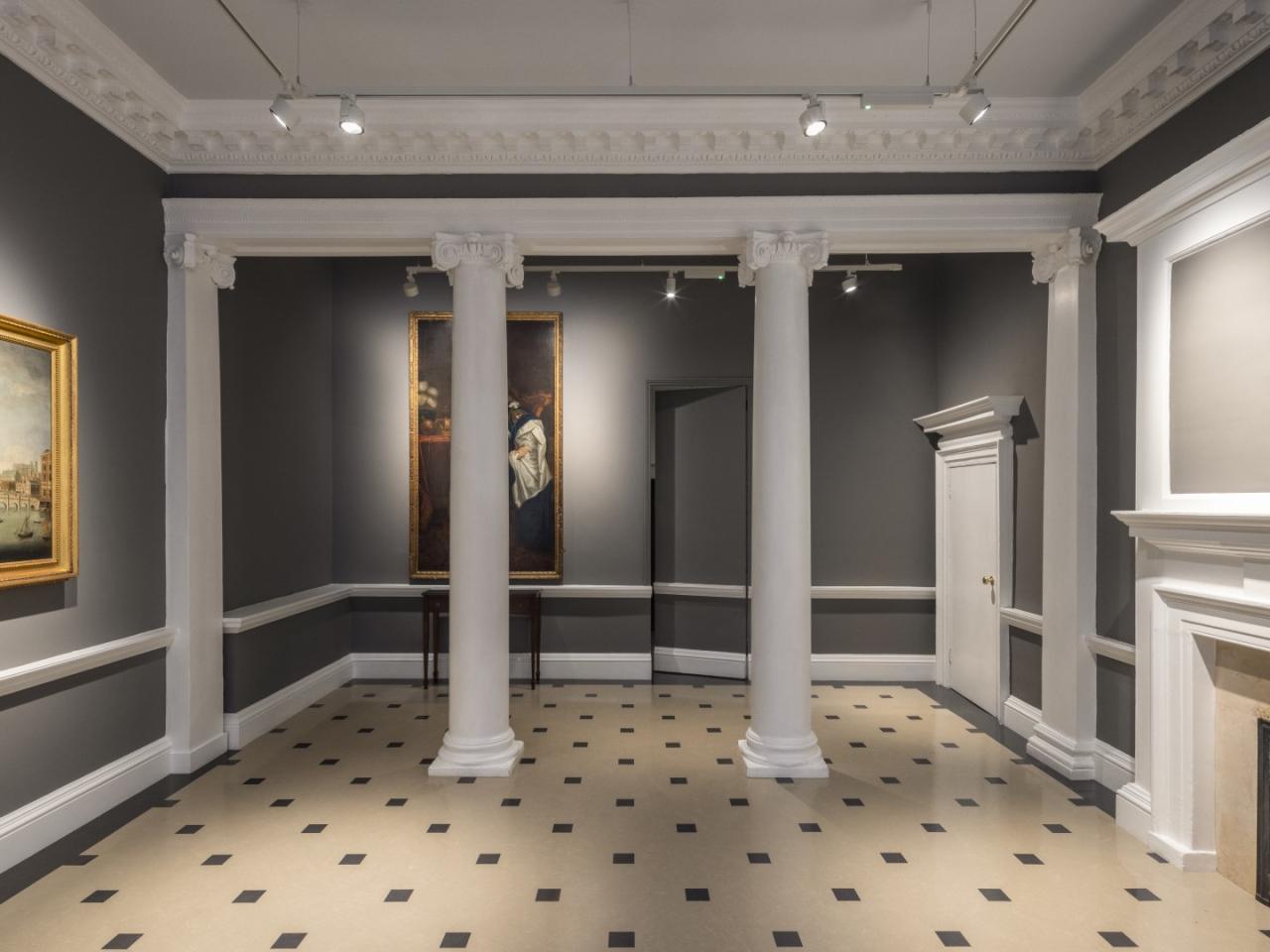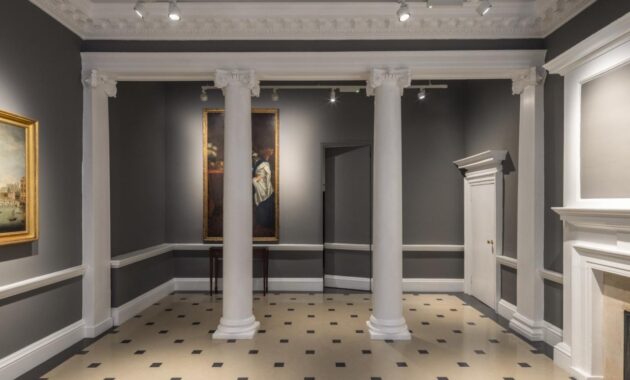Chatham House interior design is a captivating blend of history, architectural brilliance, and artistic influence. This iconic London landmark, steeped in centuries of significance, offers a glimpse into the evolution of interior design trends, showcasing a remarkable fusion of grandeur and elegance.
From its origins as a grand estate to its current role as a global forum for international affairs, Chatham House has witnessed the ebb and flow of history, each era leaving its mark on the building’s interior. The design reflects the changing tastes and styles of different periods, creating a unique tapestry of architectural and decorative elements.
Architectural Style and Design Features

Chatham House, a prominent landmark in London, boasts a captivating blend of architectural styles and design elements that contribute to its unique character. Its grand facade, intricate details, and spacious interiors reflect the architectural trends and tastes of the late 19th and early 20th centuries.
Architectural Style
Chatham House’s architectural style can be primarily classified as Neo-Georgian, a revivalist movement that drew inspiration from the elegant and symmetrical designs of the Georgian era (1714-1830). This style is evident in the building’s symmetrical facade, the use of classical elements such as pilasters and pediments, and the emphasis on clean lines and proportions.
Chatham House interior design often focuses on creating a sophisticated and timeless atmosphere. While this can be achieved with a variety of color palettes, a popular choice is to incorporate a black and grey scheme. This combination, as seen in black and grey interior design house examples, provides a sense of elegance and modernity, complementing the classic architectural features often found in Chatham House designs.
Notable Design Elements
The design elements of Chatham House contribute significantly to its architectural grandeur.
Windows and Doors
The windows of Chatham House are a prominent feature, characterized by their large size, arched tops, and intricate mullions. These windows provide ample natural light to the interior spaces, while their elegant design adds to the building’s aesthetic appeal. The doors, often crafted from solid wood and adorned with intricate carvings, echo the classical elements of the facade, creating a sense of continuity and refinement.
Fireplaces
Fireplaces are an integral part of the interior design of Chatham House, adding warmth and character to the various rooms. Many fireplaces are crafted from marble or stone, featuring ornate mantels and decorative surrounds. These fireplaces serve not only as functional heating sources but also as focal points in the rooms, enhancing their ambiance and creating a sense of comfort.
Staircases
The staircases of Chatham House are a testament to the craftsmanship of the era. They are typically wide and grand, featuring elaborate handrails, intricate balusters, and decorative newel posts. These staircases not only connect the different floors but also serve as architectural highlights, adding a sense of grandeur and sophistication to the building.
Interior Design Principles and Influences
Chatham House, with its grandeur and historical significance, exemplifies the meticulous application of interior design principles. The interior design is not merely decorative; it is a reflection of the building’s purpose, its historical context, and the artistic sensibilities of its time.
Interior Design Principles, Chatham house interior design
The interior design of Chatham House adheres to fundamental principles that create a sense of harmony, balance, and visual appeal. These principles are evident in the arrangement of furniture, the selection of materials, and the overall spatial organization.
- Symmetry:Symmetry is a prominent feature of Chatham House’s interior. The symmetrical arrangement of rooms, windows, and architectural elements creates a sense of order and stability. The use of symmetrical patterns in wallpaper, carpets, and upholstery reinforces this principle, creating a visually pleasing and balanced environment.
- Balance:Balance is achieved through the distribution of visual weight within the interior spaces. Chatham House employs both formal and informal balance. Formal balance is achieved through symmetrical arrangements, while informal balance is created through the use of contrasting elements, such as light and dark colors, textures, and patterns.
- Proportion:Proportion refers to the harmonious relationship between the sizes and shapes of different elements within a space. The proportions of rooms, furniture, and decorative elements in Chatham House are carefully considered to create a sense of scale and visual coherence.
For example, the high ceilings and large windows create a sense of spaciousness, while the carefully proportioned furniture adds a touch of intimacy.
Influences on Interior Design
The interior design of Chatham House reflects a confluence of historical periods, cultural trends, and artistic movements. The influences are evident in the architectural style, the choice of materials, and the decorative details.
- Georgian Period:The Georgian era (1714-1830) significantly influenced the design of Chatham House. The building’s Palladian architecture, characterized by its symmetrical facades, classical proportions, and elegant simplicity, is a hallmark of the Georgian style. This influence is also reflected in the interior design, which features ornate plasterwork, elegant fireplaces, and a preference for light and airy spaces.
- Neoclassical Movement:The Neoclassical movement, which emerged in the late 18th century, emphasized the principles of classical art and architecture. This influence is evident in the use of classical motifs, such as columns, pilasters, and decorative elements inspired by ancient Greek and Roman art.
These elements contribute to the sense of grandeur and sophistication that characterizes the interior of Chatham House.
- English Country House Style:The English Country House style, with its emphasis on comfort, functionality, and a connection to nature, also influenced the design of Chatham House. The use of natural materials such as wood and stone, the inclusion of fireplaces and comfortable seating areas, and the incorporation of floral motifs in textiles and decorative elements all contribute to the creation of a welcoming and intimate atmosphere.
Notable Rooms and Spaces
Chatham House, with its rich history and grand design, boasts a number of notable rooms and spaces, each with its own unique character and historical significance. These rooms are not merely architectural marvels but also serve as testaments to the house’s past and its role in shaping the world.
Key Rooms and Their Features
The following table provides an overview of the key rooms in Chatham House, highlighting their layout, design, and historical significance:
| Room Name | Description | Notable Features | Historical Significance |
|---|---|---|---|
| Grand Hall | The grand hall is the heart of Chatham House, a vast and imposing space that welcomes visitors with its grandeur and elegance. It features a soaring double-height ceiling, a grand staircase, and ornate plasterwork. | The hall is adorned with portraits of prominent figures from the house’s history, including portraits of the Pitt family, who were influential figures in British politics. The hall also features a collection of antique furniture and decorative elements. | The grand hall has been the setting for numerous significant events, including state dinners, receptions, and political gatherings. It has served as a backdrop for historical moments and has played a role in shaping the course of British history. |
| Library | The library is a haven for book lovers, featuring a vast collection of books spanning centuries. The room is adorned with rich wood paneling, a fireplace, and comfortable seating areas. | The library houses a rare collection of books, including first editions, manuscripts, and historical documents. The room also features a number of portraits and busts of literary figures. | The library has been a place of intellectual discourse and scholarship, where prominent thinkers and writers have gathered to discuss ideas and share knowledge. It has played a significant role in shaping the intellectual landscape of Britain. |
| Dining Room | The dining room is a grand and elegant space designed for formal dining. It features a large dining table, ornate chandeliers, and a collection of fine china and silverware. | The dining room is adorned with paintings and sculptures, and the walls are lined with bookshelves. The room also features a fireplace and a view of the gardens. | The dining room has been the setting for numerous state dinners and other important gatherings. It has served as a place for diplomatic negotiations and has played a role in shaping international relations. |
Interior Design Inspiration and Application

Chatham House, with its blend of classical elegance and modern functionality, offers a wealth of inspiration for contemporary interior design. Its timeless aesthetic, characterized by thoughtful details and a focus on creating inviting spaces, can be seamlessly incorporated into modern homes.
Applying Chatham House Elements to Modern Homes
The key to successfully integrating Chatham House style into contemporary settings lies in understanding its core principles and applying them selectively. Here are some practical tips and design suggestions:
Color Palette
Chatham House utilizes a balanced color palette, often featuring muted tones of cream, beige, and gray, punctuated by pops of vibrant color in accents like upholstery, artwork, and accessories. This approach can be replicated in modern homes by selecting a neutral base for walls and furniture, then introducing pops of color through artwork, throw pillows, or rugs.
For instance, a living room with pale gray walls could be enlivened with a bright blue rug or a collection of vibrant abstract paintings.
Materials and Finishes
Chatham House features a combination of traditional and modern materials, including natural wood, stone, and fabrics like linen and velvet. These materials can be incorporated into modern homes by selecting furniture pieces with wood accents, incorporating natural stone in countertops or backsplashes, and incorporating linen curtains or velvet upholstery.
Lighting
Chatham House utilizes a layered lighting approach, combining ambient, task, and accent lighting to create a warm and inviting atmosphere. This approach can be applied to modern homes by incorporating a combination of overhead lighting, table lamps, and floor lamps to create a well-lit and inviting space.
Furniture
Chatham House features a mix of traditional and modern furniture pieces, often characterized by clean lines and comfortable proportions. This approach can be replicated in modern homes by selecting furniture pieces with clean lines and comfortable seating, such as a modern sofa with a classic wingback chair or a vintage coffee table with a sleek modern rug.
Decorative Details
Chatham House features decorative details such as ornate moldings, decorative fireplaces, and intricate window treatments. These details can be incorporated into modern homes by selecting furniture with decorative elements, incorporating a fireplace with a modern mantel, or adding window treatments with interesting textures or patterns.
Cultural and Historical Significance: Chatham House Interior Design
Chatham House, with its grand architecture and opulent interiors, stands as a testament to the cultural and historical context of the late 19th century. Its design reflects the prevailing aesthetic ideals and social values of the Victorian era, showcasing a blend of architectural styles and decorative motifs that speak volumes about the era’s fascination with grandeur, craftsmanship, and the pursuit of knowledge.
Symbolism and Meaning of Design Elements
The interior design of Chatham House is rich in symbolism and meaning, reflecting the values and aspirations of its time. The use of specific design elements and decorative motifs serves to communicate a sense of power, prestige, and intellectual pursuit.
- The grand entrance hall, with its high ceilings and intricate plasterwork, evokes a sense of grandeur and welcomes visitors into a space that embodies the power and prestige of the institution.
- The ornate fireplaces, with their elaborate carvings and marble surrounds, symbolize the warmth and comfort of home, while also reflecting the wealth and status of the institution.
- The use of classical architectural elements, such as columns and pilasters, reinforces the institution’s connection to the intellectual heritage of the past and its commitment to the pursuit of knowledge.
The Role of Interior Design in Shaping the Identity of Chatham House
The interior design of Chatham House played a crucial role in shaping the identity and character of the institution as a historical landmark. The design elements and decorative motifs were carefully chosen to communicate the values and aspirations of the institution, creating a distinct and memorable impression on visitors.
- The grand library, with its towering bookshelves and comfortable reading nooks, embodies the institution’s commitment to scholarship and intellectual discourse.
- The elegant dining room, with its formal setting and intricate silverware, reinforces the institution’s status as a center of power and influence.
- The meticulously curated art collection, featuring works by renowned artists, further elevates the institution’s cultural significance and showcases its commitment to the arts.
Future Preservation and Restoration
Preserving Chatham House’s interior design for future generations presents both challenges and opportunities. The building’s historical significance demands careful preservation of its original features, while its continued use necessitates adaptability to evolving needs. This section examines the key aspects of the interior design requiring ongoing maintenance and restoration, and explores strategies for balancing preservation with modernization.
Challenges and Opportunities
The preservation of Chatham House’s interior design faces several challenges. The building’s age and historical significance necessitate meticulous maintenance and restoration to prevent deterioration and ensure the integrity of its original features. The use of traditional materials and construction techniques presents unique challenges in terms of sourcing and maintaining these materials.
Moreover, the building’s continued use as a working space requires careful consideration of the needs of modern occupants, while respecting its historical character.
Key Aspects Requiring Ongoing Maintenance and Restoration
Several key aspects of Chatham House’s interior design require ongoing maintenance and restoration.
- Woodwork:The extensive use of wood throughout the building, including paneling, doors, and staircases, requires regular inspection and treatment to prevent damage from moisture, pests, and wear and tear.
- Plasterwork:The intricate plasterwork, including moldings, cornices, and ceilings, is susceptible to cracking and damage. Regular inspections and repairs are crucial to maintain its structural integrity and aesthetic appeal.
- Paint and Finishes:The original paint finishes, often in muted colors and patterns, require careful restoration and maintenance to preserve their historical character. This involves identifying the original paint layers and using appropriate conservation techniques.
- Furnishings:The historical furnishings, including furniture, carpets, and textiles, are vulnerable to wear and tear. Regular cleaning, conservation, and restoration are essential to preserve their condition and authenticity.
Strategies for Adapting the Interior Design
Adapting Chatham House’s interior design to meet evolving needs while preserving its historical integrity requires a careful balance.
Chatham House interior design often involves creating a sophisticated and timeless aesthetic. The cost of such a project can vary significantly, depending on factors like the size of the space and the materials used. For a 2000 sq ft home, the interior design cost can range from a few thousand dollars to tens of thousands, depending on the complexity of the design and the level of customization desired.
2000 sq ft house interior design cost can be a significant investment, but it can also transform your home into a truly unique and beautiful space. When considering Chatham House interior design, it’s important to factor in the cost of furniture, fixtures, and finishes, which can add up quickly.
- Modern Technologies:Integrating modern technologies, such as lighting, heating, and ventilation systems, should be done discreetly to avoid disrupting the historical character of the building. Concealing modern systems within existing architectural features or using period-appropriate materials can minimize visual impact.
- Flexible Spaces:Adapting existing spaces to accommodate modern functions, such as conference rooms, offices, and public areas, can be achieved through the use of movable partitions, modular furniture, and flexible layouts. These elements allow for adaptable spaces while preserving the building’s original architectural features.
- Sustainable Practices:Implementing sustainable practices, such as energy-efficient lighting, heating, and ventilation systems, can reduce the building’s environmental impact while preserving its historical character. These practices can be incorporated discreetly to minimize their visual impact on the interior design.
Final Summary

Exploring Chatham House interior design is an enriching journey through time, revealing the stories behind its intricate details and the enduring legacy of its creators. It serves as a testament to the power of interior design to reflect cultural values, historical events, and artistic movements.
Whether appreciating its historical significance or drawing inspiration for modern spaces, Chatham House offers a compelling glimpse into the art of creating captivating interiors.
FAQ Resource
What is the significance of Chatham House?
Chatham House is renowned as a global forum for international affairs, hosting conferences, research, and policy discussions. Its historical significance stems from its past as a grand estate and its association with prominent figures throughout history.
What are some notable design elements of Chatham House?
The interior features grand halls, intricate staircases, ornate fireplaces, and beautifully crafted woodwork. The use of traditional materials like wood, stone, and plaster creates a sense of timelessness and grandeur.
How can I incorporate elements of Chatham House style into my home?
You can create a similar atmosphere by incorporating elements like classic moldings, symmetrical layouts, warm color palettes, and traditional furniture pieces. Use natural materials, patterned fabrics, and antique accents to enhance the historical feel.

